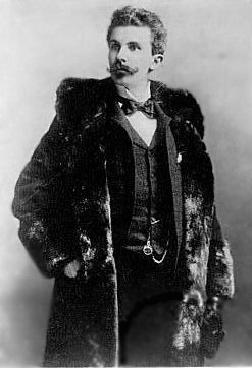Rat Killing (lost early blood sport films; 1894)
Rat Killing is an 1894 blood sport film. Produced and directed by William K.L. Dickson, and distributed by the Edison Manufacturing Company, the film depicts a Rat Terrier legitimately killing at least six large rats. Three other similar films, Rats and Terrier No. 2, Rats and Terrier No. 3, and Rats and Weasel, were also produced on the same day.
Background
In 1894, Edison Manufacturing Company began to showcase its first Kinetoscope films across viewing parlours in the United States.[1][2][3] Even then, Thomas Edison had an ambition to distribute works featuring absurd and often taboo concepts, believing such exploitation films would generate revenue by attracting curious and thrill-seeking viewers.[4][5][2] Thus, under the direction of pioneer filmmakers William K.L. Dickson and William Heise, various exploitation films were made in a short-time span, some involving animals.[6][7][4][2][5] For instance, Dickson and Heise directed The Boxing Cats, which depicted two felines with boxing gloves fighting each other in boxing fashion.[7][3] Other recordings showcased legitimate blood sports, such as cock and dog fighting.[8][6][2][7][5] Further adding to the films' exploitive nature, accounts indicated that Dickson had trouble capturing viable footage of the animals, given that their movements were often unpredictable and could easily cause the creatures to disappear off-camera.[6][2] Thus, handlers often abused the animals so that they replicated the desired action sequences.[6] Likely stemming from the difficulties in filming, these works were considered among Dickson's least successful from a filmmaking standpoint.[6][2] However, they proved commercially viable, with film historian Charles Musser noting that "Blood sports, including rat baiting, were popular early subjects for Edison's camera."[5][6][4]
Perhaps the most disturbing of these early blood sports films was Rat Killing.[4][6][2][3] Norman C. Raff and Frank R. Gammon, who promoted several Edison films, paid W.A. Heitler $32.30 to procure large rats and a weasel, which Heitler obtained from a New York rat-catcher.[6][4] Once brought to Edison Laboratories, at least six of them were placed into a ring specifically designed to accommodate the Kinetoscope's limited frame of view, along with one of two Edison-owned Rat Terriers.[2][6][4] Dickson then proceeded to film the dog attacking and ultimately killing the rats, the massacre taking just 52.5 seconds to achieve.[2][6][4][3] Declared a success, Dickson subsequently filmed two other instances of the Rat Terriers savaging rats, the films titled Rats and Terrier No. 2 and Rats and Terrier No. 3.[2][4] The films were released in September 1894.[9] Finally, the Terriers were replaced with a weasel for a fourth film, titled Rats and Weasel.[4] This one did not go according to plan, as the weasel was overwhelmed and eventually killed by the rats.[4] While the other films would be publicly released, Rats and Weasel remained locked away.[4] Another rat film, Rat Catcher, was recorded, though received criticism primary for featuring rats that were declared "too small" for it to be a compelling work.[2]
Rat Killing and its immediate sequels were cited in The Man Who Made Movies: W.K.L. Dickson as examples indicating the early years of filmmaking were not as innocent as they appeared.[6][4][3] Nevertheless, while modern American society would generally condemn blood sports, footage of animal killings was not considered taboo in the late-1800s.[6][4][2][3] Some openly enjoyed it, while influence from animal welfare groups that opposed such exploitation was limited at best.[6][4][2][3] Thus, this gave Edison carte blanche to distribute future animal exploitation films, including the infamous 1903 film Electrocuting an Elephant, which featured the death of Topsy the Elephant.[5][4] Meanwhile, Rat Killing is noted as one of the earliest films to depict actual death, alongside the 1897 documentary The Hanging of William Carr.[9]
Availability
Ultimately, Rat Killing and its sequels are lost films. Aside from the fact that around 75% of America's silent films have been declared as permanently missing, Kinetoscope works were especially difficult to preserve as the nitrate within them would cause the recordings to disintegrate overtime.[10][11] Thus, the recovery of the films remains highly unlikely.
External Links
- IMDB page for Rat Killing.
- Letterboxd listing of Rat Killing.
- IMDB page for Rats and Terrier No. 2.
- IMDB page for Rats and Terrier No. 3.
- IMDB page for Rats and Weasel.
References
- ↑ Science Museum Group summarising the opening of Kinetoscope viewing parlours in 1894. Retrieved 17 Feb '23
- ↑ 2.00 2.01 2.02 2.03 2.04 2.05 2.06 2.07 2.08 2.09 2.10 2.11 2.12 Before the Nickelodeon detailing the history of the Kinetoscope, and the filming of the first three Rat Killing films and Rat Catcher. Retrieved 17 Feb '23
- ↑ 3.0 3.1 3.2 3.3 3.4 3.5 3.6 Silent San Francisco documenting the Kinetoscope and noting films involving animal exploitation such as Boxing Cats and Rat Killing were generally neither considered taboo nor cruel back in the late-1800s. Retrieved 17 Feb '23
- ↑ 4.00 4.01 4.02 4.03 4.04 4.05 4.06 4.07 4.08 4.09 4.10 4.11 4.12 4.13 4.14 Straight summarising Edison's desire to create exploitation films, and documenting the four films. Retrieved 17 Feb '23
- ↑ 5.0 5.1 5.2 5.3 5.4 Killing for Culture detailing the extent of exploitation films in the early years of filmmaking, including Edison's infamous Electrocuting an Elephant. Retrieved 17 Feb '23
- ↑ 6.00 6.01 6.02 6.03 6.04 6.05 6.06 6.07 6.08 6.09 6.10 6.11 6.12 The Man Who Made Movies: W.K.L. Dickson summarising the animal exploitation films Dickson was involved in, including Rat Killing, and the difficulties filming them. Retrieved 17 Feb '23
- ↑ 7.0 7.1 7.2 Learning with the Lights Off listing several animal blood sport films distributed by Edison. Retrieved 17 Feb '23
- ↑ The Silent Cinema Reader listing examples of early blood sport films such as Rat Killing. Retrieved 17 Feb '23
- ↑ 9.0 9.1 The Silent Cinema Reader noting Rat Killing and The Hanging of William Carr as early examples of death captured on film. Retrieved 17 Feb '23
- ↑ The Atlantic noting around 75% of America's silent films have been deemed permanently lost. Retrieved 17 Feb '23
- ↑ America's Library noting the nitrate within Kinetoscope films caused many to disintegrate or burn overtime. Retrieved 17 Feb '23

